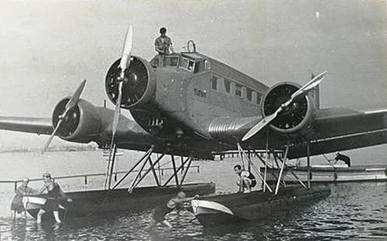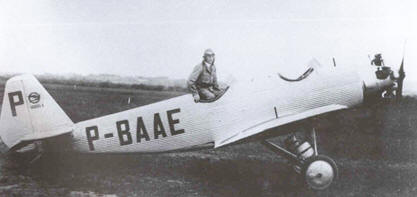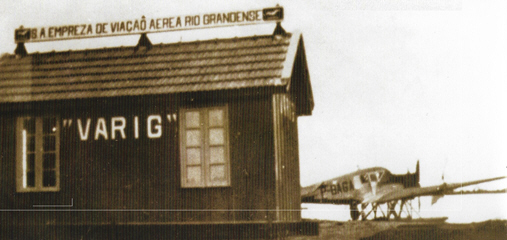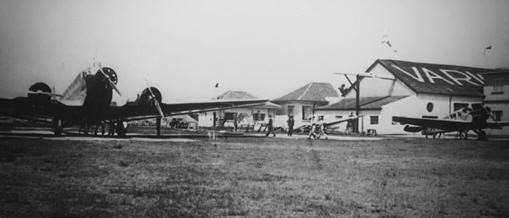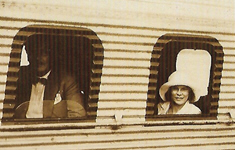|
|
20s | 30s | 40s | 50s | 60s | 70s | 80s | 90s | 2000s |
 |
In 1930 Condor Syndikat went out VARIG’s equity and VARIG had to return Atlântico and Gaúcho aircraft. With no aircraft for transport passengers, VARIG asked for Rio Grande do Sul government help. The company won land to build a hangar and acquired new Junkers aircraft. The era of seaplanes had been left behind and the Brazilian aviation entered the single-engine land plane era. At that time airfields were simple demarcated areas without any infrastructure.
With Junkers VARIG expanded it lines to the entire Rio Grande do Sul state, arriving in Livramento, Santa Cruz, Cruz Alta and Santana do Livramento. With the expansion to interior cities, VARIG’s pilots created an unusual way for guiding themselves. They knew they were on the right track when the animals were not frightened by engine’s noise, because they were already accustomed to that noise. When the animals run fright, it was a sign that they were on the wrong route.
The fleet star arrived in 1937, it was the Junkers JU52. With capacity for 17 passengers, the aircraft a "Jumbo" for that time and only operated when were enough passengers.|
30s |
||
|
Fleet:
2x
Junkers F-13 |
Destinations: Porto Alegre, Santa Maria, Livramento, Santa Cruz, Cruz Alta, Santana do Livramento, Uruguaiana |
Presidente: Otto Ernest Meyer Labastille |
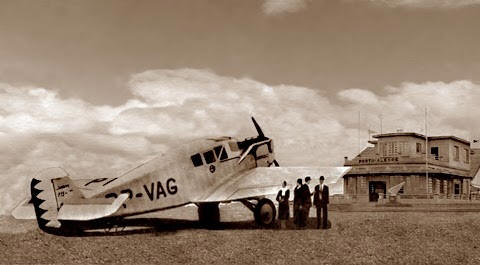

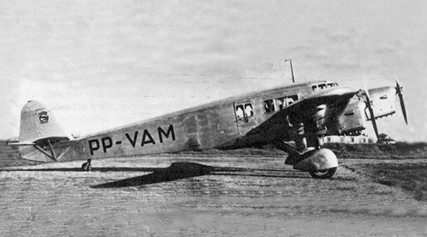
Junkers F-13 / Junkers JU-52
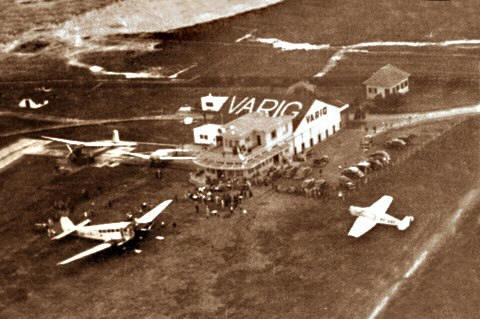
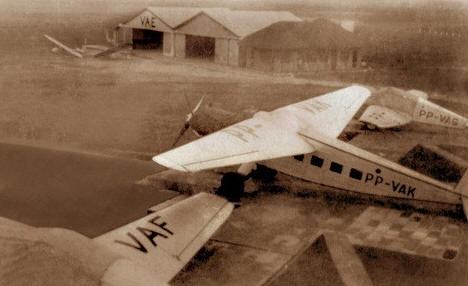
São João airport - Porto Alegre / VARIG's hangar
 |
|
HOW WAS TO FLY IN THE 1930s? In the 1930s Brazilian aviation entered the age of land planes. VARIG was responsible for building the first airport in Rio Grande do Sul. Even so, Brazil still experiencing a "heroic" phase, where aviation in the country was in early stage. At that time most of aircraft operated in Brazil were of German origin and the difficulty began with the language, because everything was in German.
The
flight was all visual, following references in the
ground, where the name of the cities written in the
roofs of the railway stations helped very much. When the
weather prevented visual navigation, the flight went
almost blindly: the pilots were guided by a compass and
a pocket watch. The commander Franz Xavier Greiss used
techniques to orient himself when visibility was zero.
Greiss hung her head out of the cabin to smell the air.
If he could smell charcoal, he knew he was flying over
the mines of Arroio dos Ratos or Butiá. Again, on a
flight to Uruguay, he saw a pasture with cattle. He
concluded that the route was right and the landing field
was near, as the cattle continued to graze quietly, a
sign that was accustomed to the noise of the plane. |

